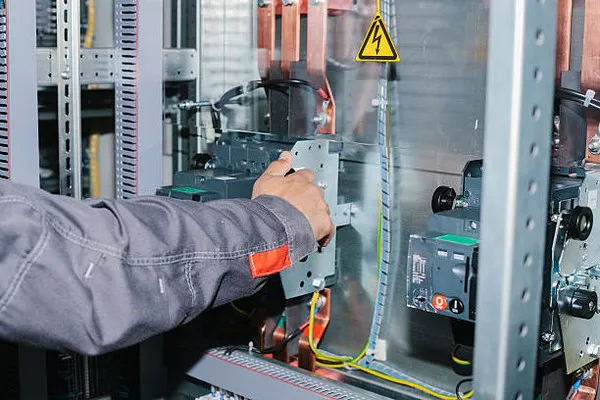In the realm of electrical engineering, transformers play a pivotal role in managing voltage levels, facilitating the transmission of electricity across various circuits and systems. Among the diverse types of transformers, the step-up transformer stands out for its unique ability to increase voltage levels efficiently and effectively. This article aims to delve into the fundamental principles underlying the operation of step-up transformers, elucidating how they facilitate the elevation of voltage levels while maintaining the integrity of electrical systems.
Fundamentals of Transformers
Before delving into the specifics of step-up transformers, it is imperative to grasp the basic principles governing the functionality of transformers as a whole. At their core, transformers are electromagnetic devices designed to transfer electrical energy between two or more circuits through electromagnetic induction. They consist of primary and secondary coils, typically wound around a core made of ferromagnetic material such as iron.
The primary coil receives alternating current (AC) input, generating a fluctuating magnetic field around the core. This changing magnetic field induces an electromotive force (EMF) or voltage in the secondary coil, thereby transferring electrical energy from the primary to the secondary circuit. The ratio of turns in the primary and secondary coils determines the voltage transformation ratio of the transformer.
Step-Up Transformer: Operating Principle
A step-up transformer is characterized by a higher number of turns in the secondary coil compared to the primary coil. This configuration enables it to increase the voltage level between the primary and secondary circuits. The primary coil is connected to a source of alternating current, while the secondary coil is linked to the load requiring an elevated voltage supply.
The core principle behind the voltage increase in a step-up transformer lies in the application of Faraday’s law of electromagnetic induction and the principle of conservation of energy. As alternating current flows through the primary coil, it generates a fluctuating magnetic field around the core. This changing magnetic field induces a corresponding alternating voltage in the secondary coil through electromagnetic induction.
According to Faraday’s law, the magnitude of the induced voltage in the secondary coil is directly proportional to the rate of change of magnetic flux linking the coil. Since the secondary coil of a step-up transformer has more turns than the primary coil, it experiences a higher rate of change of magnetic flux for a given alternating current input. Consequently, the induced voltage in the secondary coil is proportionally higher than the applied voltage across the primary coil.
Voltage Transformation Ratio
The voltage transformation ratio (N) of a transformer is defined as the ratio of the number of turns in the secondary coil (Ns) to the number of turns in the primary coil (Np). Mathematically, it is expressed as: N=Np/Ns
For a step-up transformer, the voltage transformation ratio is greater than 1, indicating that the secondary voltage is higher than the primary voltage. The magnitude of voltage increase depends directly on the turns ratio of the transformer. For instance, if the turns ratio is 1:10, implying that the secondary coil has ten times more turns than the primary coil, the voltage across the secondary coil will be ten times higher than the voltage applied to the primary coil.
Efficiency Considerations
While step-up transformers are instrumental in elevating voltage levels, it is essential to consider their efficiency in practical applications. Transformer efficiency is determined by factors such as core losses, copper losses, and impedance matching between the primary and secondary circuits.
Core losses, primarily due to hysteresis and eddy currents, result in energy dissipation within the transformer core. Copper losses, on the other hand, stem from the resistance of the winding wires and lead to energy dissipation in the form of heat. Both these losses contribute to reduced efficiency and necessitate careful design considerations to minimize wastage.
Furthermore, impedance matching ensures optimal power transfer between the primary and secondary circuits, maximizing efficiency. Mismatched impedances can lead to reflected voltages and currents, resulting in energy loss and potential damage to the transformer.
Applications of Step-Up Transformers
Step-up transformers find widespread applications across various industries and sectors where elevated voltage levels are required. Some notable applications include:
Power Distribution: In electrical grids, step-up transformers are employed to increase the voltage of electricity generated at power plants before transmission over long distances. Higher voltages reduce power losses during transmission, enhancing the efficiency of the grid.
High-Voltage Power Supplies: Step-up transformers are integral components of high-voltage power supplies used in applications such as X-ray machines, particle accelerators, and laser systems. These devices require high voltage for operation, which is provided by step-up transformers.
Renewable Energy Systems: In renewable energy installations such as wind farms and solar power plants, step-up transformers are utilized to increase the voltage of electricity generated by turbines or solar panels for integration into the grid.
See Also Where Step Down Transformer Is Used
Conclusion
In conclusion, step-up transformers play a crucial role in elevating voltage levels across electrical circuits and systems. By leveraging the principles of electromagnetic induction and voltage transformation, these devices facilitate efficient power transmission, distribution, and utilization across various applications. Understanding the fundamental principles underlying the operation of step-up transformers is essential for engineers and practitioners involved in electrical engineering and related fields.

